
1833 - 1898

Sir Edward Coley Burne-Jones, 1st Baronet was an English artist and designer closely associated with the Pre-Raphaelite Brotherhood, and largely responsible for bringing the Pre-Raphaelites into the mainstream of the British art world.
Burne-Jones was born in Birmingham, the son a frame-maker at Bennetts Hill, where a blue plaque commemorates his birth. His mother died within six days of his birth, and he was raised by his father and an unsympathetic housekeeper. He attended Birmingham's King Edward VI grammar school, and then studied theology at Exeter College, Oxford. At Oxford he became a friend of William Morris as a consequence of a mutual interest in poetry, and was influenced by John Ruskin. At this time he discovered Thomas Malory's Le Morte d'Arthur which was to be so influential in his life.
He studied under Rossetti, but developed his own style influenced by his travels in Italy with Ruskin and others. He had intended to become a church minister, but under Morris's influence decided to become an artist and designer instead. After Oxford, from which he did not take a degree, he became closely involved in the rejuvenation of the tradition of stained glass art in England; his stained glass works include the windows of St Martin's Church in Brampton, Cumbria, the church designed by Philip Webb.
In 1856 Burne-Jones became engaged to Georgiana MacDonald (1840-1920), one of the MacDonald sisters. She was training to be a painter, and was the sister of Burne-Jones's old school friend. The couple married in 1860, after which she made her own work in woodcuts and became a close friend of George Eliot. (Another MacDonald sister married the artist Sir Edward Poynter, a further sister married the ironmaster Alfred Baldwin and was the mother of the Prime Minister Stanley Baldwin, and yet another sister was the mother of Rudyard Kipling. Kipling and Baldwin were thus Burne-Jones's nephews).
In 1867 Burne-Jones and his wife settled in Fulham, London. Morris later fell in love with Georgiana, but she rejected him[citation needed]. For much of the 1870s Burne-Jones did not exhibit, following a spate of bitterly hostile attacks in the press, and an affair with his Greek model Maria Zambaco which ended with her trying to commit suicide in public.
In 1880 the Burne-Joneses bought Prospect House in Rottingdean, near Brighton in Sussex, as their holiday home, and soon after the next door Aubrey Cottage to create North End House, reflecting the fact that their Fulham home was in North End Road. (Years later, in 1923, Sir Roderick Jones, head of Reuters, and his wife, playwright and novelist Enid Bagnold, were to add the adjacent Gothic House to the property and which became the inspiration and setting for her play The Chalk Garden).
His troubled son Philip (1861-1926) became a successful portrait painter. His adored daughter Margaret (1866-1953) married John William Mackail (1850-1945); friend and biographer of Morris, and Professor of Poetry at Oxford from 1911-1916.

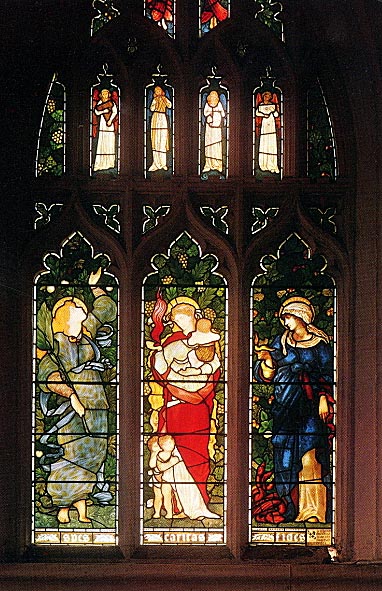
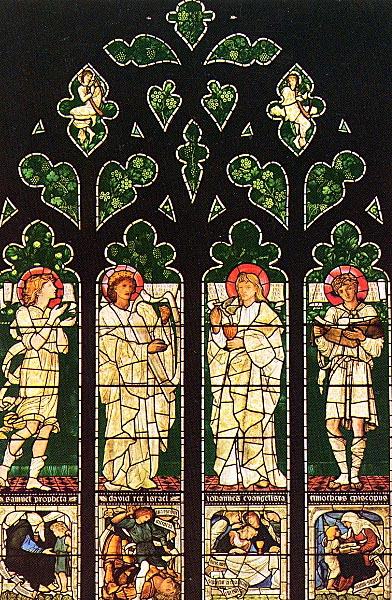
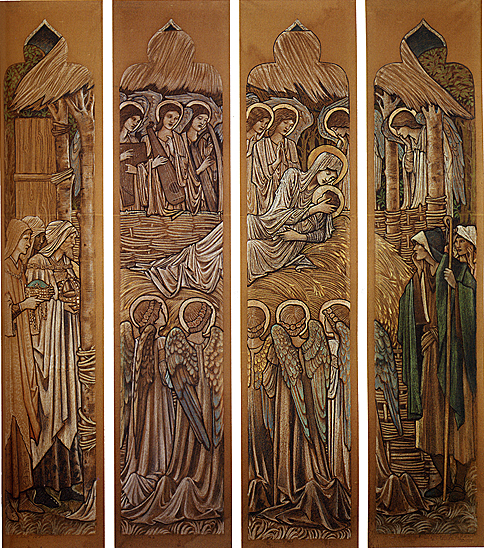
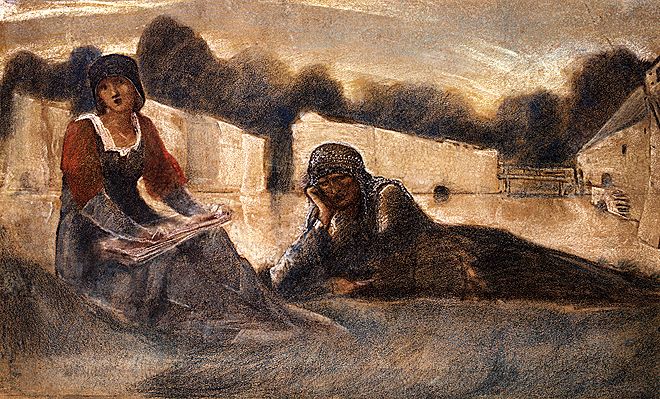
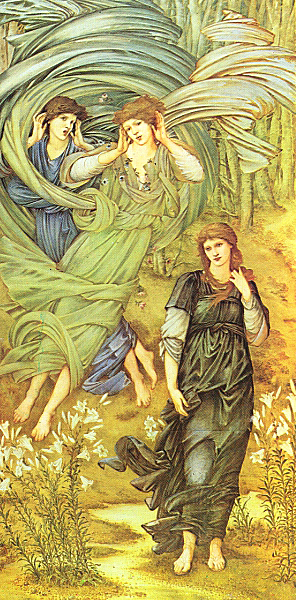

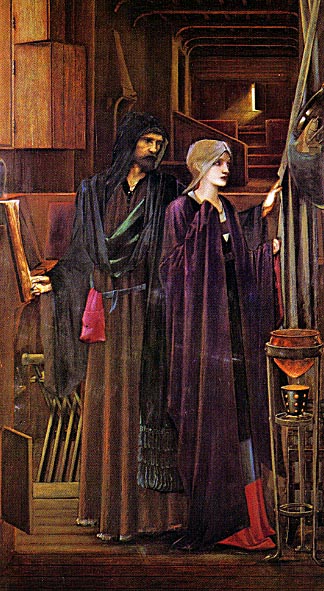
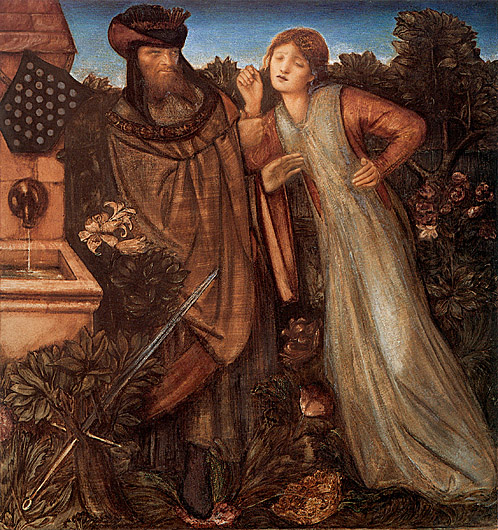
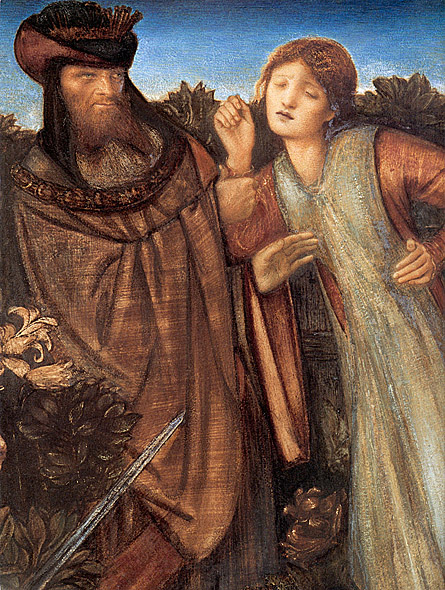
_1868_77.jpg)
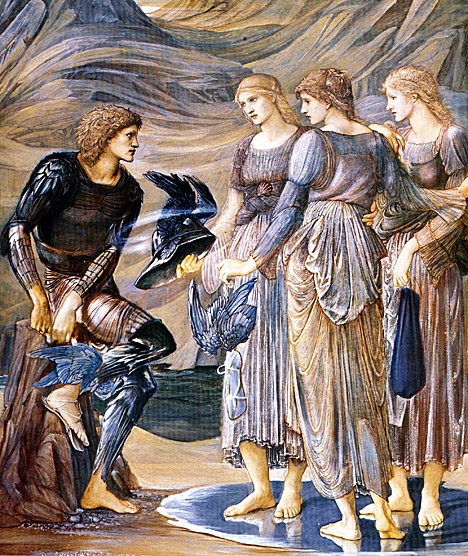

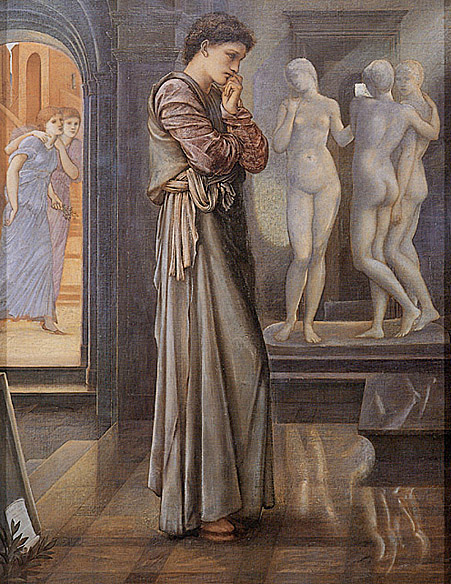

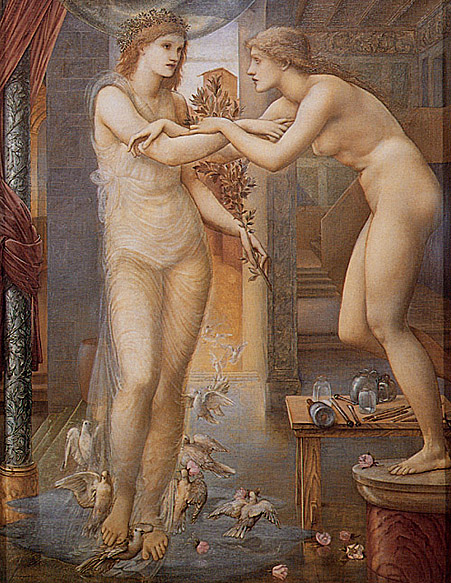

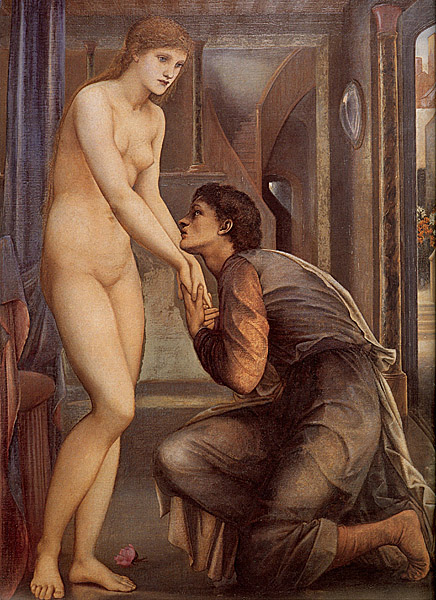
In his Pygmalion series (1875-78), Edward Burne-Jones embodies the classic tale of ideal love and human aspiration in a narrative sequence of four images. In the well-known story, Pygmalion, who finds no living woman beautiful enough for him to love, sculpts an ivory statue of an ideal woman and falls in love with it. He asks Aphrodite to send him a woman like the statue. The goddess answers his prayers by giving life to his work and names her Galatea, whom he then marries.
The Heart Desires, the first painting in the series, can be interpreted as a prologue to the tale. Burne-Jones depicts the young sculptor, lost in thought, in what appears to be a museum. Although we cannot see the unknown work being contemplated, the sculptured trio of the Graces in the background gives an indication to his thoughts. The figures are illuminated by a light source shining down on their sculpted forms, and their reflection on the glossy marble floor serves to remind us of the artistic ideal for which the sculptor strives.
The second painting, entitled The Hand Refrains, shows Pygmalion in front of his finished work. The light streaming through the window again highlights the statue's ivory beauty, which also represents the limitation of human power -- the artist's hard work has produced an ideal figure but no mortal effort can bring his desire to life. The third painting in the series, The Godhead Fires, demonstrates the divine power of the goddess as she bestows the breath of life. Borne on a cloud of doves and roses, Aphrodite supports Galatea as she gazes out in bewilderment. Half woman and half statue, her grasping arms begin her transformation, while her feet are still rooted on the pedestal on which she was created. In The Soul Attains Burne-Jones represents the final stage of the legend with Pygmalion kneeling adoringly in front of his newly realized woman. She yields her hands to him; however, she does not meet his gaze but looks away in the distance. Characteristic of many of Burne-Jones's women, and of the women of PRB painting, her gaze expresses a sense of mystery and unearthliness. It seems as though she has not yet comprehended her reason for being and what her creator has now attained.
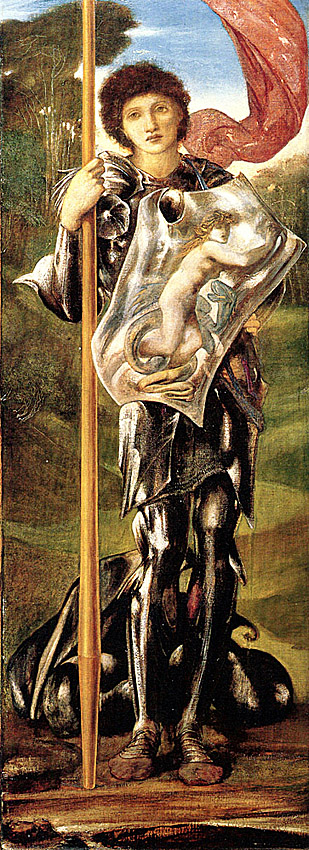
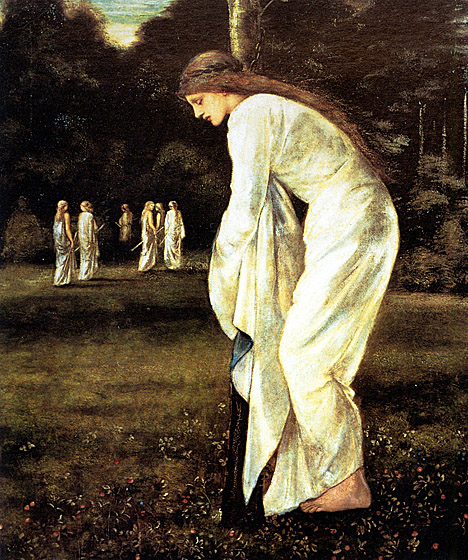

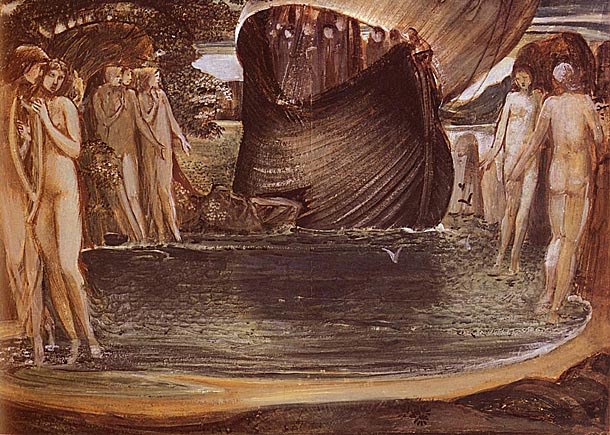
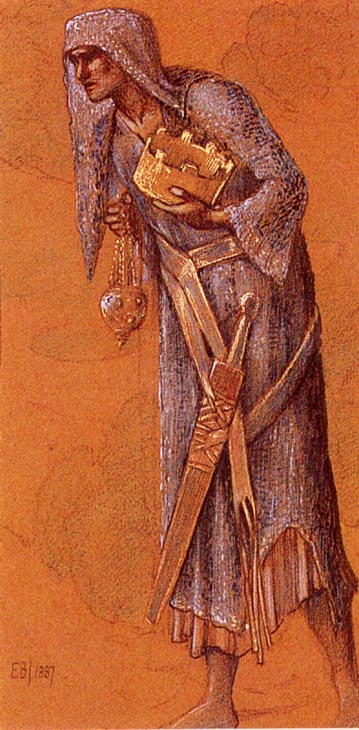
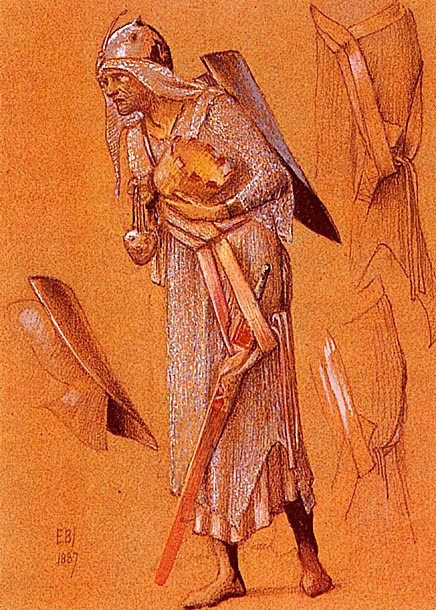
_1887.jpg)
_1887.jpg)

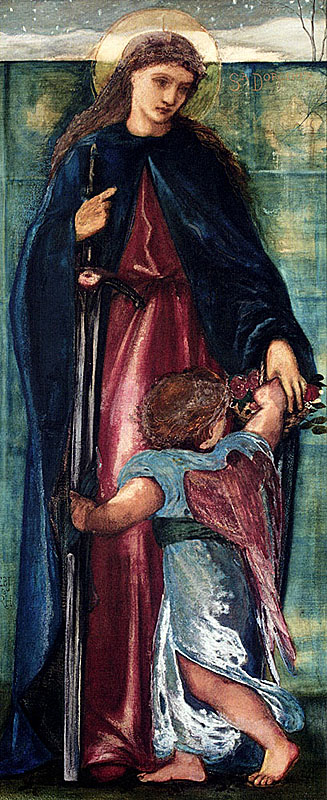
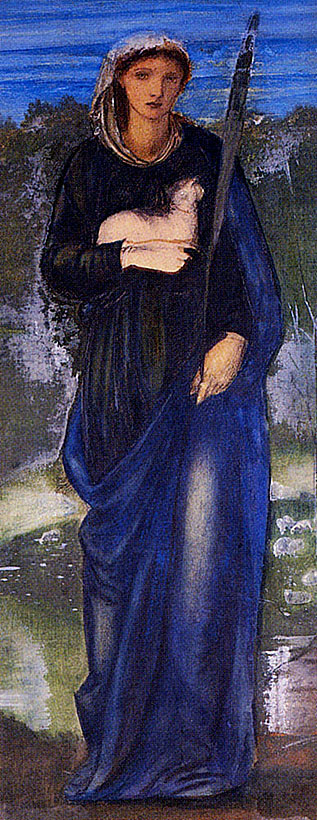
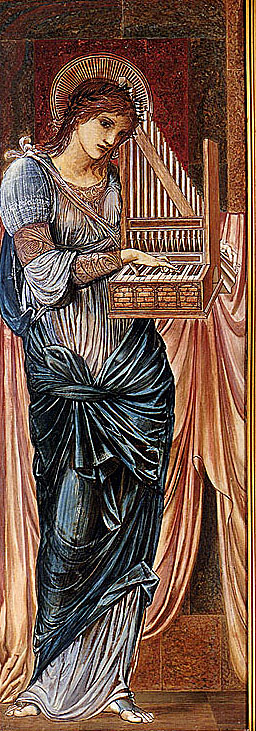
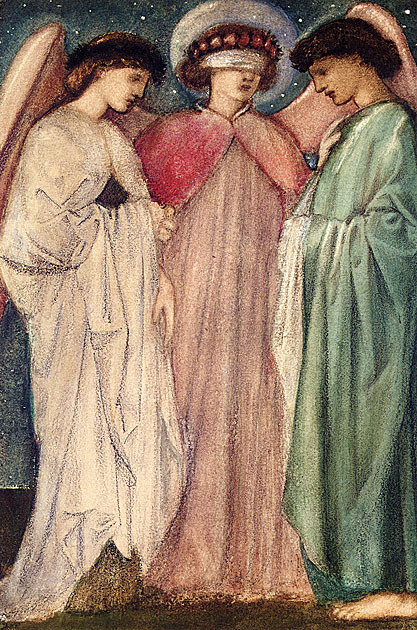
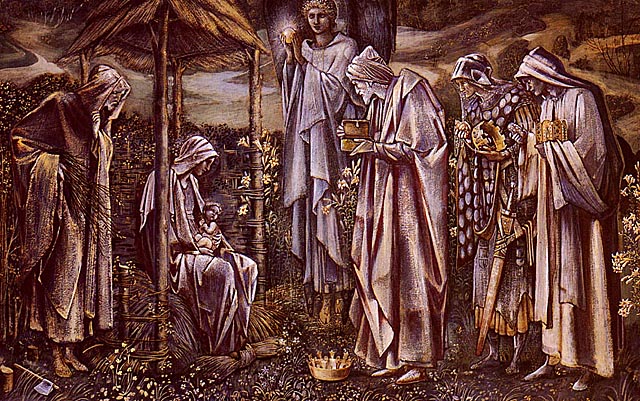
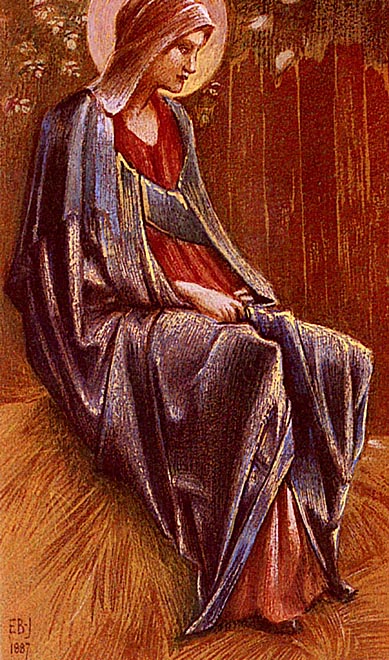
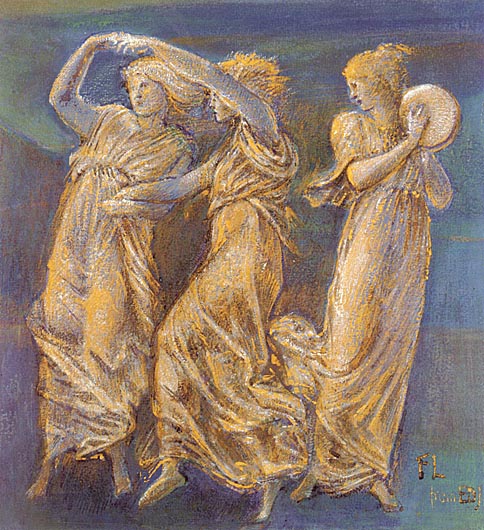
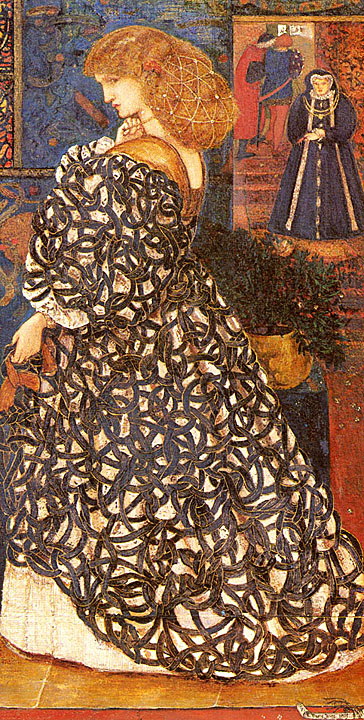
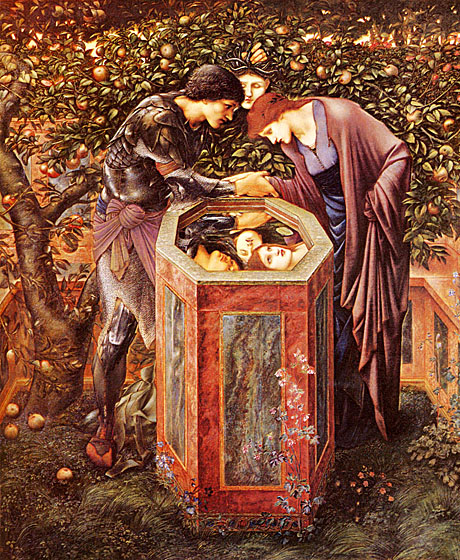

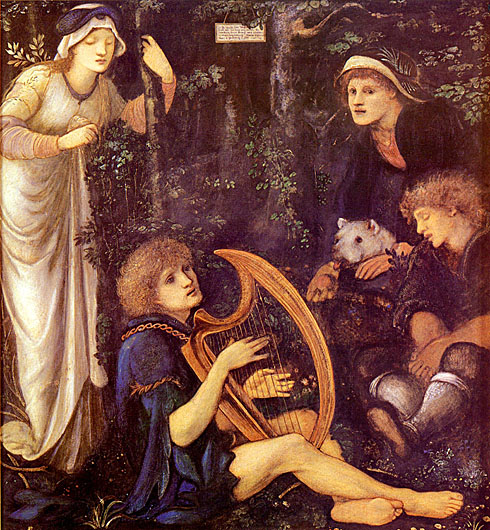
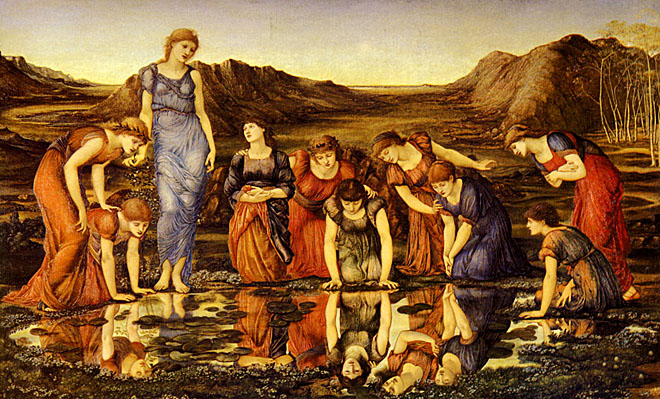
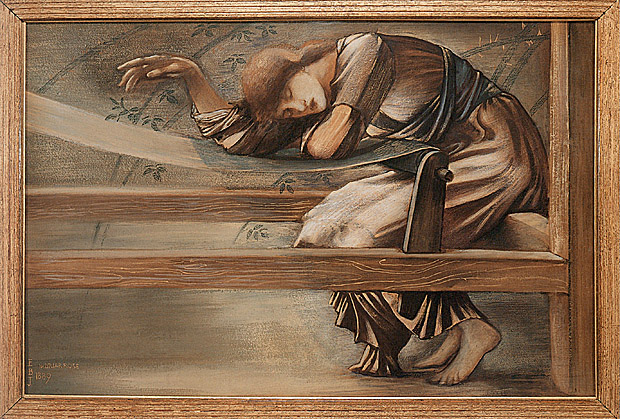



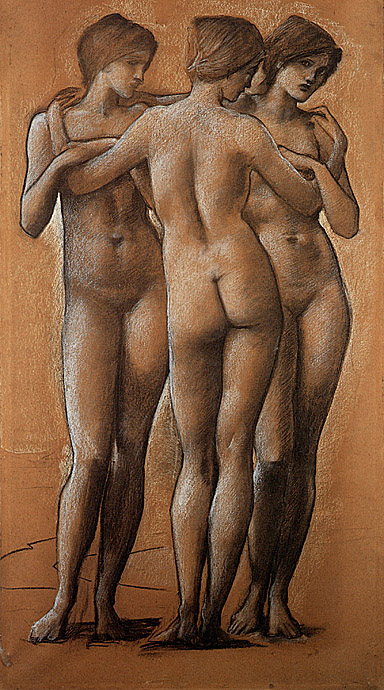
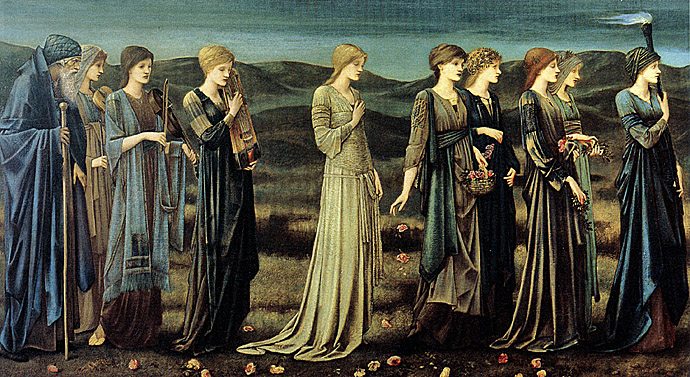
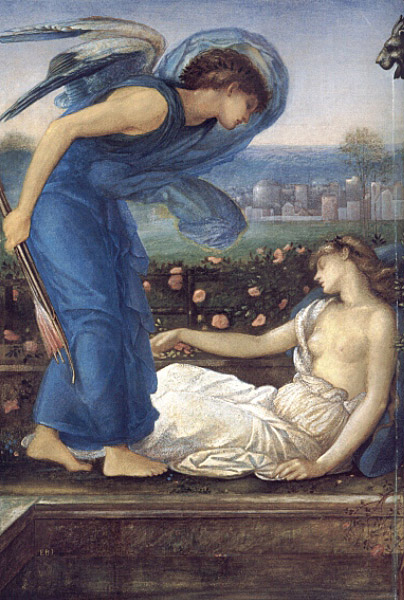
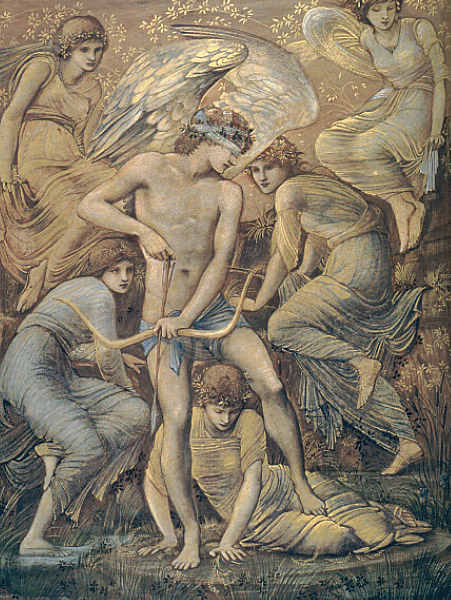
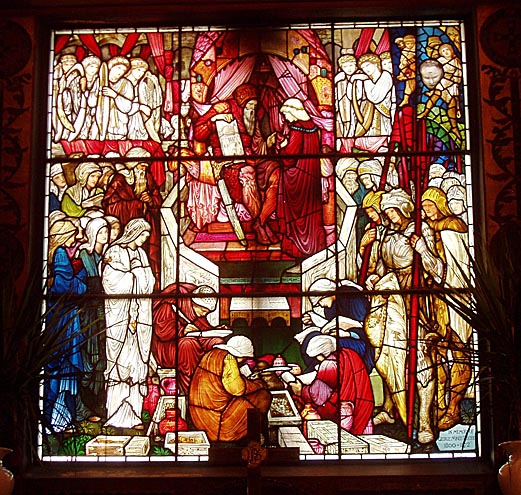
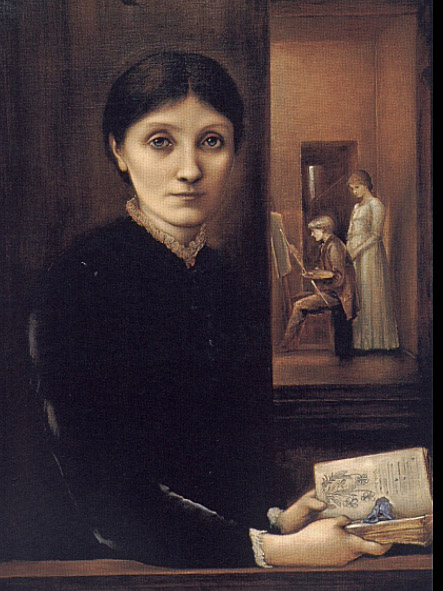

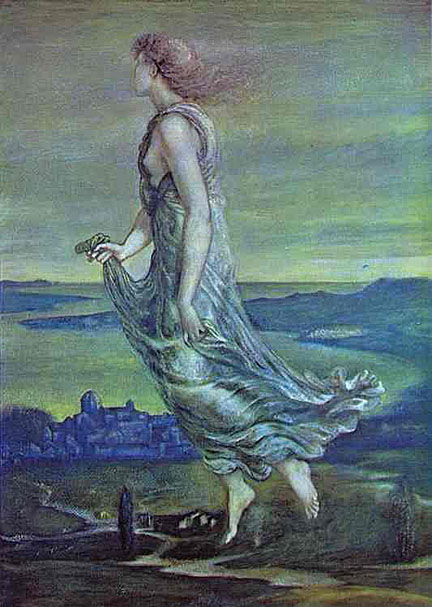
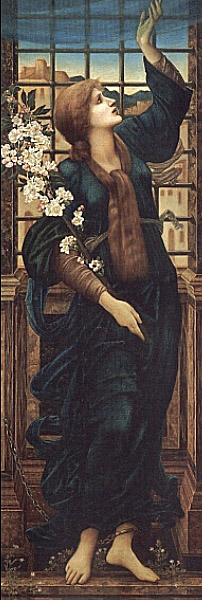

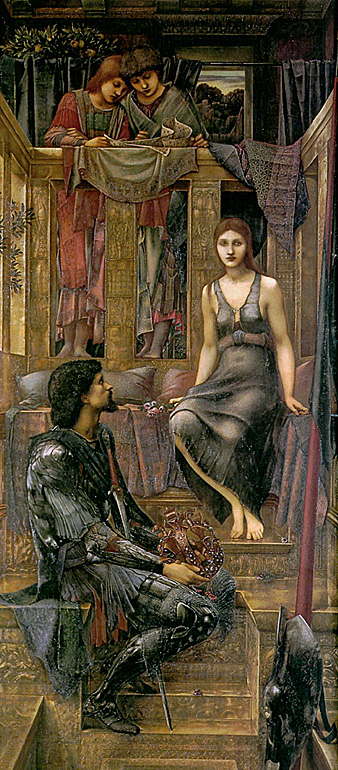
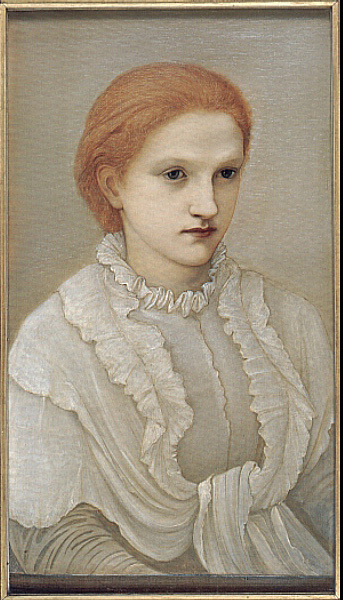
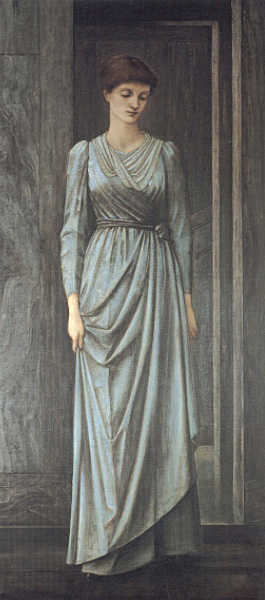
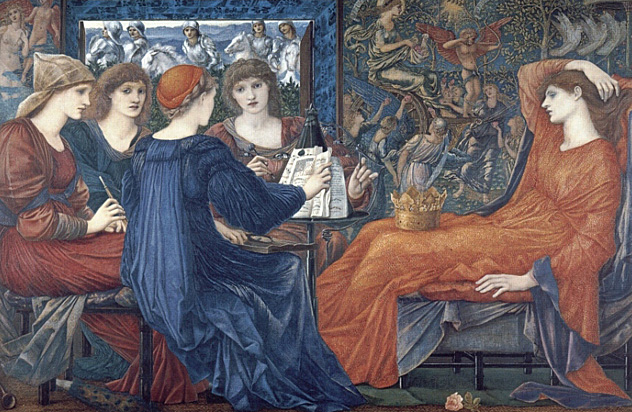
Algernon Charles Swinburne's dramatic and lyrical poem "Laus Veneris" and Edward Burne-Jones's subsequent painting of the same title were created within 4 years of each other, the poem in 1866 and the painting in 1870.
According to Julia Cartwright, Burne-Jones incorporated some of the details from Swinburne's poem into his painting, while Swinburne was able to see the watercolor version of Burne-Jones's painting, yet to be completed. Burne-Jones's Laus Veneris shares the same mood of sadness, particularly in the eyes and the languid gesture of the love-sick queen. The painter depicts her beautifully attired in flame colored robes with a golden crown on her lap, yet her sad and pale expression contrasts her splendor. She reclines wearily in her bower, the "palace in the mountain," hung with an elaborate tapestry embroidered with love tales of olden times, featuring Venus on a chariot. Four maidens sit by her side with open scrolls of music, singing praises of love to cheer her up. Behind the figures and through the open window, there are five knights who seem to pause and listen, intrigued by the scene. This scene appears in Swinburne's description:
Certain stanzas in Swinburne's poem seem to directly connect to the painter's choices and inclusion of detail in this manner, capturing the overall tone of love sick sadness. The claustrophobic atmosphere of the "Horsel," or Venus's palace, presented in the poem: "Inside the Horsel here the air is hot;/ Right little peace one hath for it, God wot;" shows in the tight composition of this scene. The tapestry's elaborate scene seems to compete with the presence of the ten figures, creating a crowded composition. The glowing red tones and sumptuous coloring, for which the painting received much praise, appears in these stanzas:
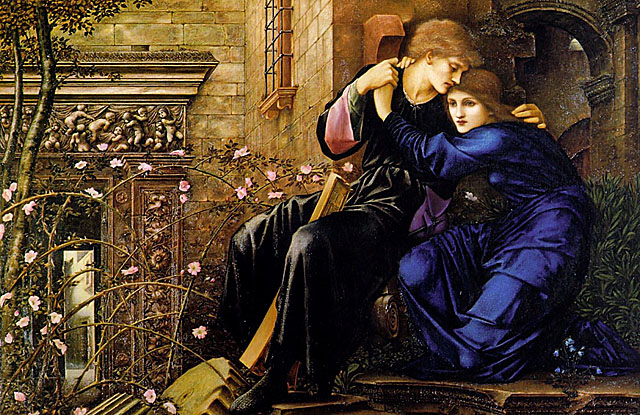
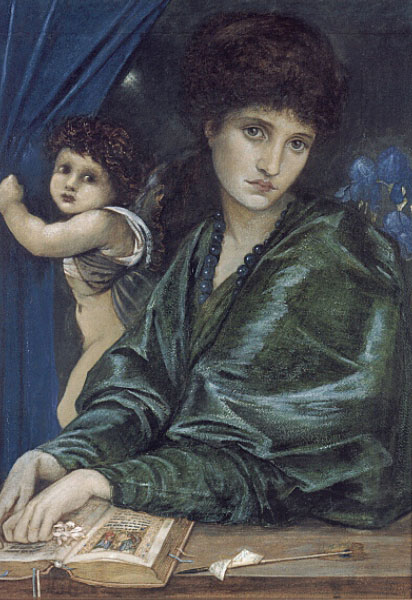
In 1866 her mother hired Edward Burne-Jones to do a painting for her (he had chosen "Cupid finding Psyche") and they fell in love. Possibly they lived together for a few months in 1869. Burne-Jones ended the affair around 1871 because he felt too much guilt, but he couldn't get her out of his mind and kept painting her as a sorceress or a temptress, for example in "The Beguiling of Merlin".
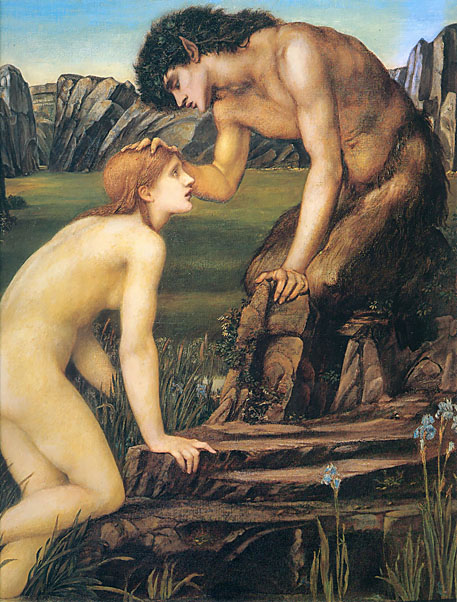
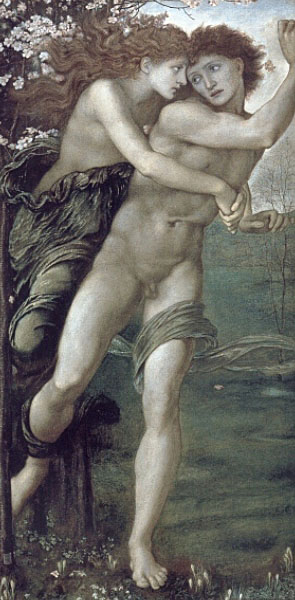
Several member of the Pre-Raphaelite brotherhood objected to the nudity of Demophoon and asked him to cover the character up. Burne-Jones refused and resigned from the brotherhood.
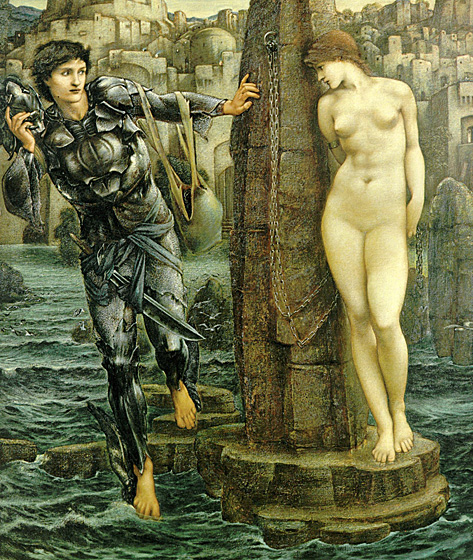
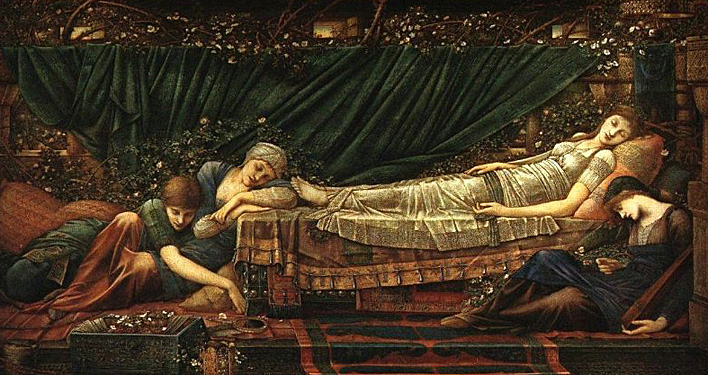
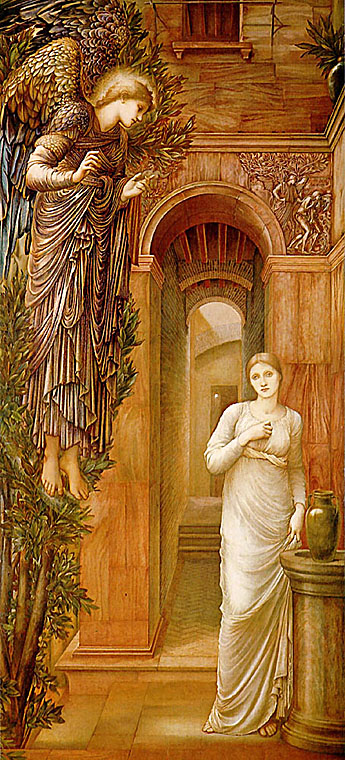
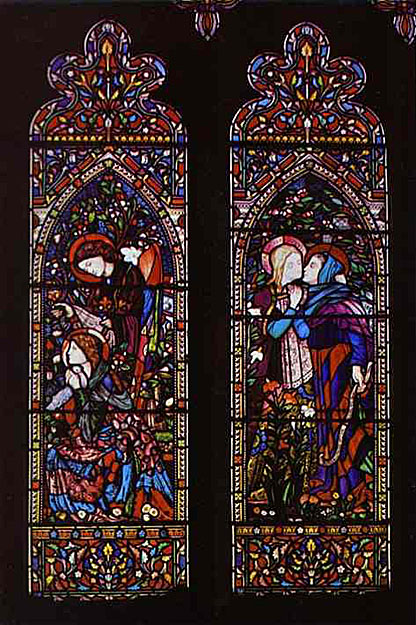
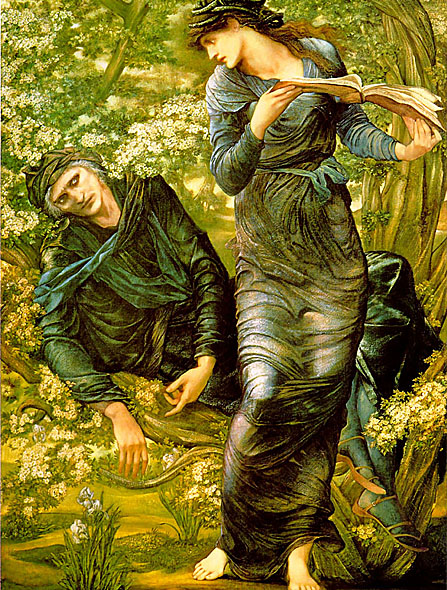
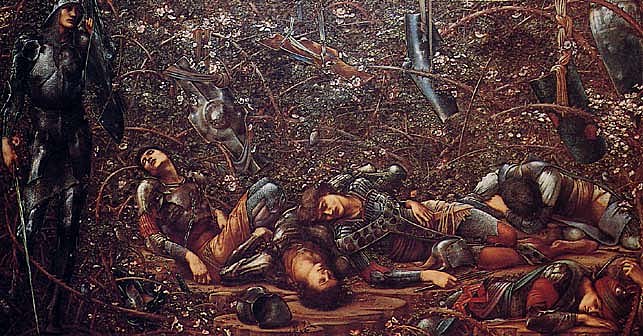
The fateful slumber floats and flows
About the tangle of the rose.
But lo the fated hand and heart
To rend the slumberous curse apart.
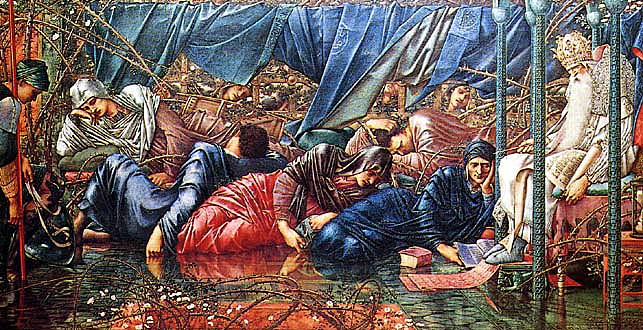
The threat of war, the hope of peace
The Kingdom's peril and increase.
Sleep on, and bide the latter day
When fate shall take her chains away.

The maiden pleasance of the land
Knoweth no stir of voice or hand,
No cup the sleeping waters fill,
The restless shuttle lieth still.
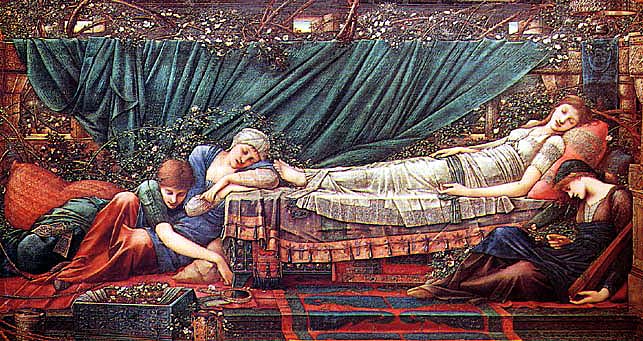
Here lies the hoarded love the key
To all the treasure that shall be.
Come, fated hand, the gift to take
And smite the sleeping world awake.
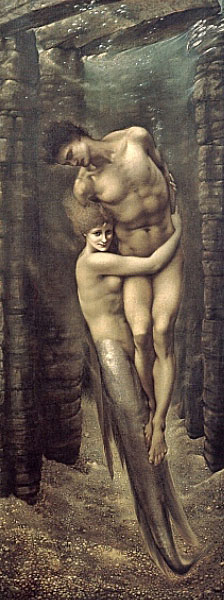
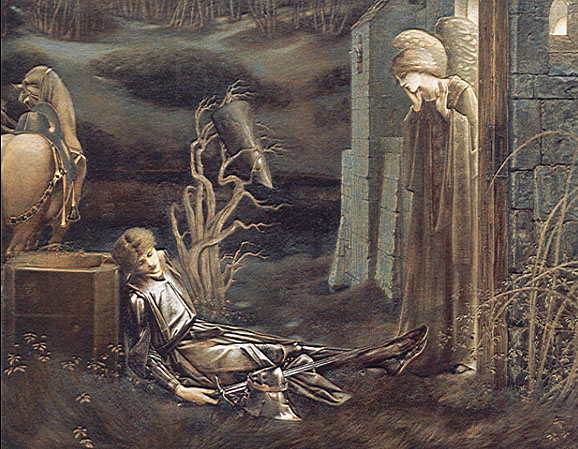
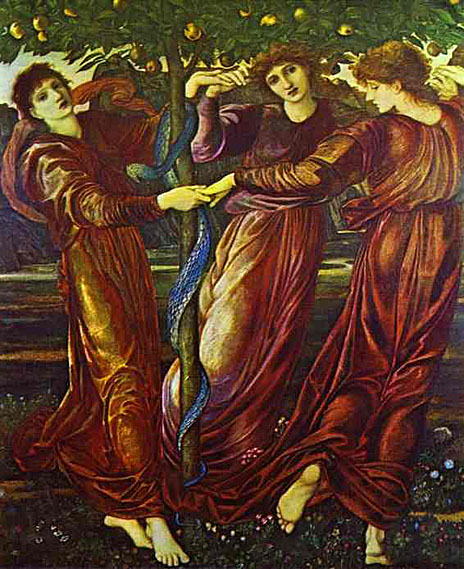
According to the Sicilian Greek poet Stesichorus, in his poem the "Song of Geryon", and the Greek geographer Strabo, in his book Geographika (volume III), the Hesperides are in Tartessos, a location placed in the south of Iberia (Spain). The Euboean Greek poet Hesiod said that the ancient name of Cádiz was Erytheia, another name for the Hesperides.

He appears-albeit briefly-in the legends of Homer, Plato and Aeschylus, who tell not just of Pan's amorous adventures but also of his part in the relationships of others. Burne-Jones has not illustrated a specific legend but portrayed a generalized symbolic and somewhat humorous scene of two lovers in an idyllic Arcadian landscape.
When first exhibited, The garden of Pan was highly praised as Burne-Jones' finest work, no doubt due to the fully-worked landscape rendered in exquisite detail and the figures being appreciated as the very model of ideal beauty. Burne-Jones was a key follower of the founders of the Pre-Raphaelite Brotherhood, a group of artists whose admiration of Early Renaissance art led them to reject the idea of beauty as defined by High Renaissance artists such as Raphael and Michelangelo.
Burne-Jones was a leader of the second generation of the Pre-Raphaelite Brotherhood artists, and he developed their use of muted tones in his paintings and drew classically proportioned figures.
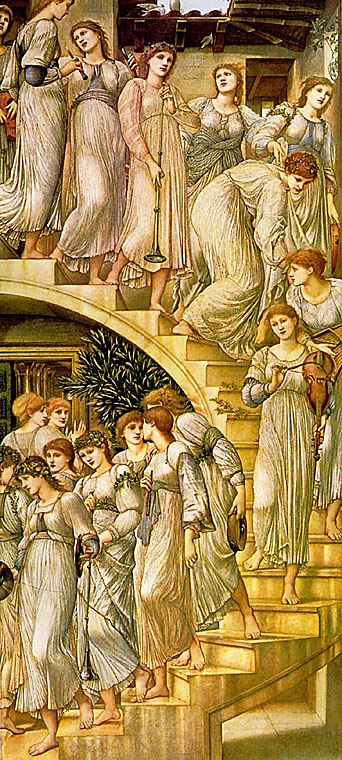
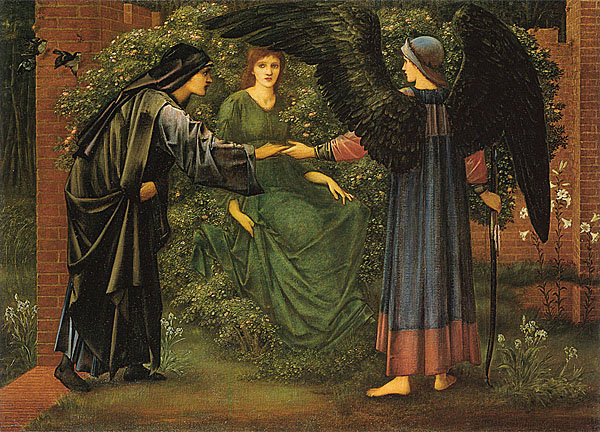
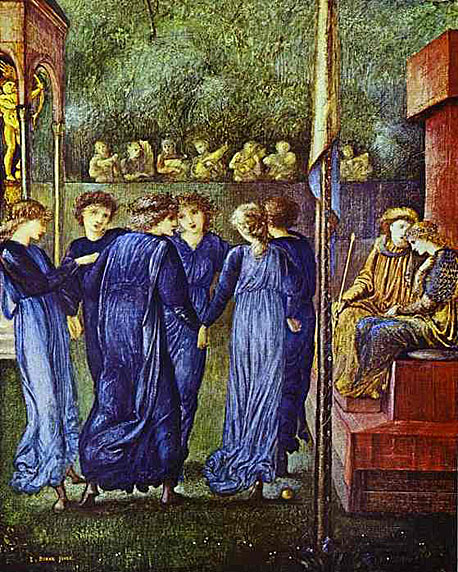
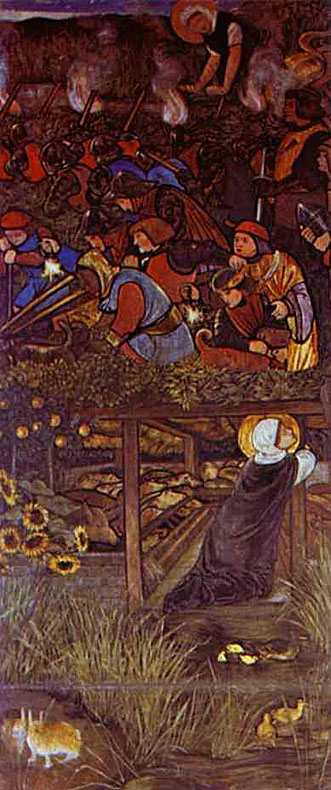

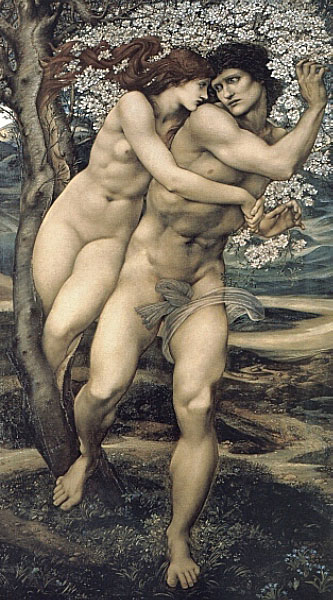

In 1877, Burne-Jones was persuaded to show eight oil paintings at the Grosvenor Gallery (a new rival to the Royal Academy). These included The Beguiling of Merlin. The timing was right, and he was taken up as a herald and star of the new Aesthetic Movement.
As well as painting, he also worked in a variety of crafts; including designing ceramic tiles, jewelry, tapestries, book illustration (the Kelmscott Press's Chaucer in 1896), and stage costumes.
In 1881 he received an honorary degree from Oxford, and was made an Honorary Fellow in 1883. In 1885 he became the President of the Birmingham Society of Artists. On the recommendation of W E Gladstone, he was created a baronet in the baronetage of the United Kingdom in 1894, but was unhappy about accepting the honor, and he told friends that the contempt of his wife for it was 'withering.' Devastated by the death of his friend Morris in 1896, Burne-Jones' health declined substantially until his death on 17 June 1898. Six days later, at the intervention of the Prince of Wales, a memorial service was held at Westminster Abbey. It was the first time an artist had been so honored. Burne-Jones was buried in Rottingdean churchyard, near Brighton, a place he knew through summer family holidays.
Long out-of-fashion in the art world, due to Modernist art and Abstract Expressionism, it was not until the mid 1970s that his work began to be re-assessed and once again acclaimed.
Burne-Jones exerted a considerable influence on British painting, as detailed in the large exhibition in 1989 at the Barbican Art Gallery, London. (In book form as: John Christian, The Last Romantics, (1989)). Burne-Jones was also highly influential among French symbolist painters, from 1889. His work also inspired poetry by Swinburne - Swinburne's 1886 Poems & Ballads is dedicated to Burne-Jones.
Two of Burne-Jones' studio assistants, T.M. Rooke and Charles Fairfax Murray, went on to a successful art careers as painters in their own right. Murray later became an important collector and respected art dealer. Between 1903 and 1907 he sold a great many works by Burne-Jones and the Pre-Raphaelites to the Birmingham Museum and Art Gallery, at far below their market worth. Birmingham Museum and Art Gallery now has the largest collection of works by Burne-Jones in the world, including the massive watercolor Star of Bethlehem, commissioned for the Gallery in 1897. The paintings are believed by some to have influenced the young J.R.R. Tolkien, then growing up in Birmingham.
Source: Art Renewal Center
Return to Pagina Artis
Return to Bruce and Bobbie's Main Page.